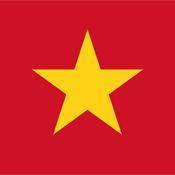
Over the last decade the Vietnamese market for imported fruit has gone from strength to strength, keeping pace with the country’s impressive economic growth. And although the economy is forecast to continue to expand in 2011, importers this year will be feeling the effects of a series of government-initiated devaluations of the nation’s currency.
In the past 12 months it has been devalued by 12 per cent, said Ralf Matthaes of market research group TNS Vietnam, which, coupled with an inflation rate which has reached nine percent already this year, is causing all manner of problems in the import and export sectors.
NC Group import broker Pham Minh Nghia said the Vietnamese government’s devaluation of the national currency was affecting imports.
“The local demand appears to have slowed down these days due to high inflation and the depreciation of the local currency. It means a double hike in prices in terms of transactions made in US dollars,” he told Fruitnet.com.
With regard to the current state of the economy, he predicts consumer confidence will be low, making sales of imported fruit difficult this year.
“Consumers tend to cut fruit expenses, particularly imported ones,” he said.
Luu Global managing director Tuong Luu, said despite a hike in the costs of imported produce, sales in recent months have been tracking a steady course. He said high-quality imported fruits are still in demand and the Vietnamese market is continuing to grow rapidly.
John Kriek of US-based exporter Pandol told Fruitnet.com the Vietnamese market now presents more challenges than when the company first started trading there in the early to mid 1990s, but also presents more opportunities.
“In the beginning, only the very wealthy could afford imported produce, but as the economy has grown a whole new market has emerged, providing us with a great opportunity to be part of a growing and vibrant market. It’s an exciting but challenging time for us.”
He said although the market requires predominantly premium quality fruit there is now more space to offer lower-quality product, provided the price is right.
He attributed this to the country’s economic growth and a resulting increase in the ranks of the country’s middle class.
In June of last year Asiafruit Magazine reported the Vietnamese average yearly income had more than doubled to US$1,200 in 2009, compared to US$552 in 2004.
Mr Nghia agreed sales opportunities are opening up between the high and low-end of the market, but believes it will take time to develop.
“The high-end and low-end of the market is still separated, but recently it seems that some middle-ground is appearing in the supermarkets, though the volume is not that much.”
While countries such as the US, Australia and New Zealand supply Vietnam with much of its high-quality produce, the majority of imported fruit comes from its northern neighbour, China.
Owing to its booming economy, and swelling domestic demand for its fresh produce, the cost of Chinese fruit has spiked recently in many Asian nations. And Vietnam is no exception.
Le Van Khanh of Hanoi-based importer VPDJSC said the increased cost of Chinese produce could create more room in the Vietnamese market for supply countries that can provide top quality produce and food safety reassurances.
“Now the exchange rate between China and Vietnam is much higher than before, thus the price of Chinese fruits, such as grapes, is not cheaper than that from other countries,” he said. “Meanwhile, the quality of fresh fruit from the US and Australia is much better `than China`. Also, consumers prefer not to eat fruit from China because of health issues.”
Changing buying habits are also creating opportunities for importers, he added.
“Nowadays people in Vietnam buy high quality fruit not just for gifts, but also for everyday eating, because the living standard is quite high in Ho Chi Minh City and Hanoi.”
The consumption of imported fresh fruit is increasing at a good pace in Hanoi said Mr Khanh, and the split in the percentage of consumption between Ho Chi Minh City and Hanoi is around 60/40.